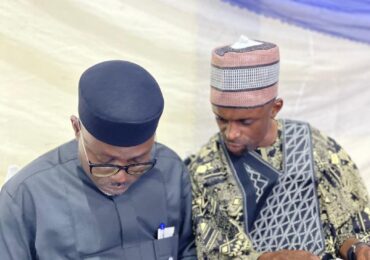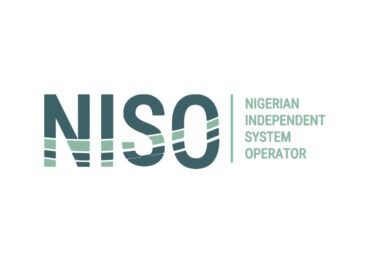(For The Record) Overview of Power Sector Issues and Way Forward
6 min read
By Adedayo Adelabu
Issues with the Electricity Supply Value Chain are:
multiple simple technical operational problems across all segments in the value chain, but made complicated by lack of sustaining liquidity and infrastructure funding, as well as structural misalignment.
The simple technical operational issues are:
Inadequate shortage of gas supplies and aging dilapidated generation machineries. causing below optimal capacity utilization causing short supply by the GenCos.
Inadequate power evacuation capacity at Genco locations, coupled
with unstable and fragile transmission lines, devoid of automated frequency controls, lacking in fail-over or back-up capacity with frequent human disturbances through vandalization and theft.
Aging weak distribution infrastructures (lines and transformer) coupled with huge meter gap causing unbearably large technical and collection losses.
These are issues that look so simple on the surface and should ordinarily require little efforts to fix over time. However, it’s been quite difficult to get these problems fixed over the years due to the complications wrapping the entire value chain end to end.
The major complications are: The persistent liquidity issues coming from inappropriate tariff regime, poor collections and inadequate funding of government subsidies leading to huge debts owed to the transmission, generation and gas supply companies.
This has restricted investments required for sustaining supply flow, capacity expansion and infrastructural improvements. It has also not only discouraged lending to the sector by financial institutions as the sectoral activities are not bankable, but has also made the sector unattractive to new investors.
The second complication is the value chain structural issues bothering on operations and control of generation, transmission and distribution segments.
There has been an inability of the Nigerian Electricity Supply industry to adhere to market rules and to enforce market discipline. This has led to each segment in the value chain operating on a best endeavour principle.
The third complication is the lack of clear and unambiguous definition of our concept of electricity as a nation. Is it a commercial product or a social service? This extends to distorted tariff regime with unfunded government subsidy culminating into huge debts inhibiting continuity and sustainability of the supply value chain. In fact, we need a national discourse on this last issue.
Road map to stabilizing the sector in preparation for turn around and transformation.
Settlement of existing sectoral outstanding debt obligations to the Gas Supply and Power Generation companies using partly cash payment and guaranteed debt instruments. N1.3 trillion is current debts to the GenCos and $1.3 billion legacy debts to the GasCos.
A national discourse on the nation’s perspective to Electricity supply, commercial product or social service. There must be an agreement across divides on how we define electricity.
Depending on the outcome of the above, either implementation of a cost reflective tariff or a cashed backed Federal government guaranteed subsidy funding regime to inject liquidity into the sector.
Increased investments across the value chain for infrastructural improvements, capacity expansion and transmission automation.
Diversification of power generation to absorb renewables and facilitate the nation’s journey to Energy Transition target.
Encourage distributed power strategy in conjunction with sub-national government focussing on embedded power model to reduce pressure on the National grid, and to ensure alternative electricity supply to DISCOS.
Development of a rural electrification plan from a bottom up and a top down approach , to identify the unserved and the underserved rural and sub urban communities. This will enable the government to direct targeted subsidy through rural electrification agencies at a national and sub national level using renewables (small hydro, solar micro grid, solar home systems and wind technology
Develop and expand capacity for sectoral regulation, technical inspection and sectoral expertise. NERC NEMSA NAPTIN to be the forum of capacity and operational upgrade.
Ongoing Activities in the Ministry and its Agencies to improve Power Supply.
Augmentation of the Hydro and Thermal Power Plants: Operational Capacity.
The recent completion of the 700MW Zungeru Hydro Electricity Power Plant in Niger State.
Financing the required infrastructure to enable complete evacuation of the 40MW Kashimbila Hydro Power Plant in Taraba state using Promissory Note facility at the Debt Management office (DMO).
Resuscitation of abandoned 26 small and medium size Hydro plants across the country with Solar hybridization. This will adopt embedded power model with connectivity to the regional Discos distribution network.
Completion of the 20MW Wind/Solar hybrid power plant in Katsina state.
Completion of infrastructure require for complete evaluation of the 30 million Gurara Dam Power Plant.
Revisitation of the abandoned 15 IPP Solar plants in the Northern part of the country, and developing an IPP solar auction with the support of the World Bank.
Augmentation of the operational capacity of all NIPP power plants under the Niger Delta Power Holding Company to at least 50% capacity. They all currently operate below 20% Capacity.
Resolution of the Gas Supply issues to the Gencos:
In liaison with the Ministry of Finance, Budget and Economic Planning, and office of the Special Adviser on Energy to the President, to settle the huge outstanding debts obligations to the Gencos and the Gencos, using cash injection and guaranteed Debt instruments.
Working with the Minister of State for Petroleum Resources (Gas), to have a working arrangement for firm gas supply contracts for the Gencos and possibly agree on Gas to power domestic supply pricing in local currency to reduce price fluctuations.
Fixing Transmission infrastructural gap in evacuation Lines stability and capacity expansion.
Accelerating the Presidential Power Initiatives (Siemens Project) with completion of the Pilot phase of the project and commencement of the Phase One to increase Transmission capacity to 8,000MW.
Accelerating talks on the EPC+F super grid projects with two Chinese firms for the Western and Eastern Grid for fail over/Back up capacity for the National grid to achieve grid stability and capacity expansion.
Resolve to complete reasonable proportion out of the over 100 ongoing uncompleted TCN projects for Transmission improvements. No new project for 2024 as focus will be on completing ongoing projects abandoned due to cost escalation from variations and fluctuations in contract price.
Upgrading of old and weak 330KV and 132KV Transmission substations with new and higher capacity transformers, reactors and other accessories.
Start projects of reconductoring of existing aging Transmission power lines.
Speed up intervention projects funded by loan from multilateral development partners aimed at impairing transmission infrastructure. This includes World Bank, ADB and JICA
Improvement to Distribution Infrastructures.
Direct Intervention by the federal government in the provision of distribution transformers, electric Poles and power lines in undeserved communities not so attractive to Discos for investments. Budget provision have been made for this in 2024 Appropriation.
Acceleration of all Metering Acquisition programs harmonizing all under the Presidential Material Initiatives under my oversight. Counter Party Seed Funds have been made available for this to complement other financing options.
Revitalizing the Discos for better performance by restructuring them along state lines in harmony with respective state governments and MOFI.
Introduction of stiff sanctions for non-performing Discos without fear or favour. NERC has been charged to raise their game in this respect. Establishing a Customer Complaints
Escalation Desk at all NERC offices across the 36 states and FCT.
Technical and Operational Capacity upgrades for NEMSA and NAPTIN.
Renewable and Rural Electrification Option to bridge existing gap in Grid Supply.
Commissioning of hundreds of ongoing mini/micro grids projects of
the Rural Electrification Agency across the country.
Installation of Micro Grid Solar projects in selected public buildings, higher institutions of learning and major teaching hospitals and health institutions.
Heavy 2024 intervention by the federal ministry of Power and the Rural Electrification Agency to intensify provision of Solar Homes Systems (SHS), Solar Street lights and more mini/micro grids to the unserved and the underserved rural and sub-urban communities. Provisions have been made in the 2024 budget for this.
Full text of press briefing by Honourable Minister of Power, Chief Adedayo Adelabu on February 14, 2024



